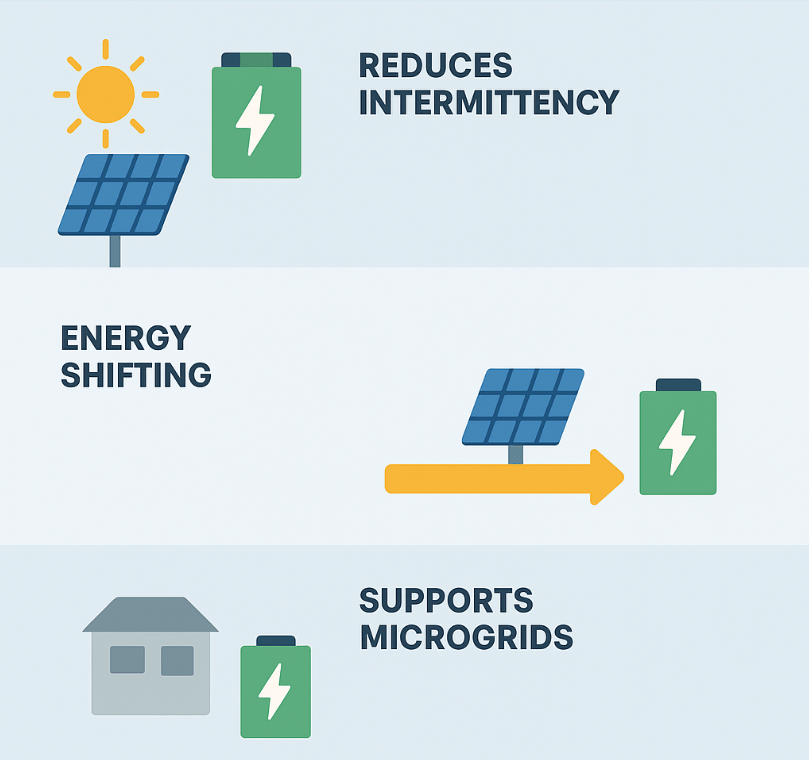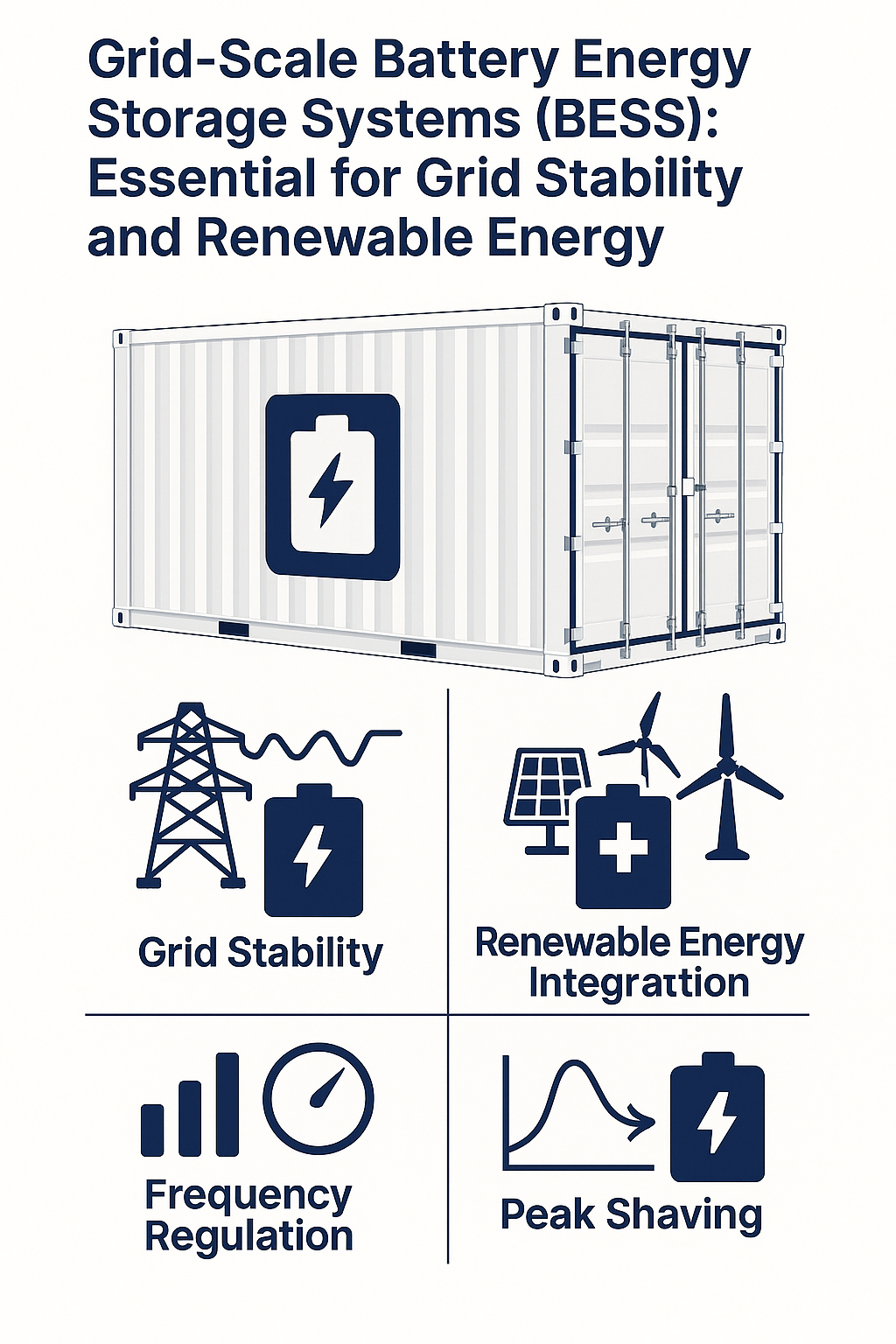How C&I BESS Enhances Solar and Wind Power Integration
As renewable energy adoption accelerates, businesses are investing in solar and wind power to reduce costs, cut emissions, and achieve sustainability goals. However, the challenge of intermittency—the variability of renewable energy output—remains a barrier to full reliability. This is where C&I BESS with renewable energy plays a transformative role. By providing storage, flexibility, and stability, Battery Energy Storage Systems (BESS) enable companies to maximize the value of their renewable assets.
The Intermittency Challenge in Renewable Energy
Solar and wind energy are inherently variable. Cloud cover can reduce solar production within minutes, while wind speed changes affect turbine output. Without a buffer, these fluctuations can lead to instability, grid imbalances, or even curtailment of renewable energy. For businesses that rely on consistent power for manufacturing, data centers, or logistics, unpredictability becomes a costly problem.
C&I BESS with renewable energy addresses this issue by storing excess electricity when generation is high and releasing it when demand spikes or output drops. This ensures steady energy delivery, even when renewable sources fluctuate.
Energy Shifting: Maximizing Renewable Value
One of the greatest advantages of BESS is energy shifting. With storage in place, businesses can:
- Capture solar energy during peak sunlight hours and use it in the evening when demand and grid prices are higher.
- Store wind power generated overnight and release it during working hours.
- Reduce dependency on expensive peak-hour electricity.
By shifting energy use, C&I BESS with renewable energy ensures companies optimize both their operational costs and sustainability performance.
Supporting Microgrids for Energy Independence
Another growing trend is the deployment of microgrids, where localized power networks combine renewable generation, storage, and sometimes backup generators.
C&I BESS enhances microgrids by:
- Providing islanded operation during grid outages, keeping facilities powered.
- Enabling seamless integration of solar panels, wind turbines, and other distributed resources.
- Balancing local supply and demand in real time.
For businesses operating in remote areas or regions with unstable grids, C&I BESS with renewable energy makes energy independence achievable.
Grid Services and Demand Response
Beyond internal use, BESS enables companies to participate in grid programs. By integrating renewable assets with storage, businesses can:
- Offer demand response, reducing load during peak events.
- Provide frequency regulation by discharging or absorbing energy instantly.
- Contribute to grid stability while generating new revenue streams.
This dual role—supporting both business operations and the wider grid—demonstrates the strategic advantage of pairing C&I BESS with renewable energy.
Real-World Applications
Several industries are already leveraging this synergy:
- Manufacturing plants integrate solar with BESS to avoid downtime and reduce peak energy costs.
- Cold storage facilities use wind plus storage to stabilize refrigeration loads.
- Campuses and hospitals adopt renewable-powered microgrids with BESS to ensure uninterrupted operations during outages.
These examples highlight how C&I BESS with renewable energy is not just a trend—it’s becoming a business necessity.
Sustainability and Corporate Goals
Today, corporations are under increasing pressure to achieve net-zero emissions. By combining renewable generation with energy storage, businesses can:
- Maximize renewable utilization rates.
- Reduce reliance on fossil-fuel-based backup systems.
- Meet Environmental, Social, and Governance (ESG) reporting requirements.
In this way, C&I BESS with renewable energy contributes not only to cost savings but also to long-term brand reputation and compliance with global sustainability frameworks.
Conclusion
The integration of C&I BESS with renewable energy is revolutionizing how businesses harness solar and wind power. By reducing intermittency, enabling energy shifting, supporting microgrids, and providing grid services, BESS empowers companies to take full advantage of renewable investments. For forward-looking enterprises, storage is no longer optional—it is essential to building a reliable, resilient, and sustainable energy future.



